Stay up to date on news, events and special features.
Collection Spotlight: Science, technology, engineering, and mathematics (STEAM & STEM)
Below are some recommended titles found at UBC Education Library to add to your reading list.
by Froschauer, Linda
Many resources help you encourage young children to learn about science, technology, engineering, and math (STEM). But only this book of quality STEM experiences was curated by the veteran educator who edits Science and Children, NSTA’s award-winning journal for elementary teachers. Sensitive to the needs of both preK-5 students and busy teachers, editor Linda Froschauer developed Bringing STEM to the Elementary Classroom as a comprehensive source of classroom-tested STEM investigations. The 36 lessons are:
- conveniently organized into grade-level bands
- grounded in science education research
- designed to encourage learning across disciplines, promote real-world problem-solving skills, introduce children to STEM careers, and serve all students equally well; and
- connected to all elements of the Next Generation Science Standards.
Whether you’re just beginning to delve into STEM experiences or eager for fresh ideas, Bringing STEM to the Elementary Classroom provides you with new, interesting, and productive strategies.
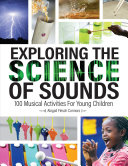 Exploring the science of sounds: 100 musical activities for young children
Exploring the science of sounds: 100 musical activities for young childrenby Connors, Abigail Flesch
Most preschool teachers have musical instruments in their classrooms but may not realize they can use them for science explorations.
Science, technology, engineering, arts, and math–STEAM–these explorations are crucial for laying a solid foundation for later learning. In this book, discover 100 activities that let children ages 3-6 explore the science of music and sound using materials easy to find for a preschool classroom.
Children will use their bodies to create sounds, explore the relationship between size and pitch, investigate how tempo affects the way we listen to sounds, create musical instruments, and much more. From the drops of rainwater to the tinkling of wind chimes, the science of sound is all around.
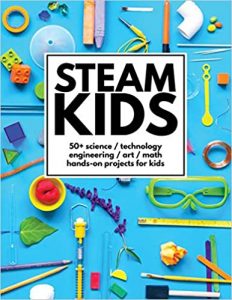 STEAM kids: 50+ science, technology, engineering, art, math hands-on projects for kids
STEAM kids: 50+ science, technology, engineering, art, math hands-on projects for kidsby Carey, Anne; Dziengel, Ana; Scardino, Amber
 Baby steps to STEM: infant and toddler science, technology, engineering, and math activities
Baby steps to STEM: infant and toddler science, technology, engineering, and math activitiesby Barbre, Jean
Innately curious, infants and toddlers love to explore, investigate, and discover–making the earliest years a perfect time to begin teaching the foundations of STEM.
This book defines what science, technology, engineering, and math education looks like for this age group, and why it is so vital for children to develop STEM knowledge. Expand your understanding of STEM to lay the foundation for children to develop skills in critical thinking, communication, collaboration, and creativity.
This book supplies fifty play-based developmentally appropriate activities for introducing STEM. All activities include extensions, inquiry questions, and tips on how to help parents strengthen children’s learning at home.
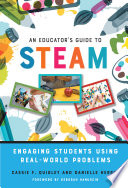 An educator’s guide to STEAM: engaging students using real-world problems
An educator’s guide to STEAM: engaging students using real-world problemsby Quigley, Cassie; Herro, Danielle
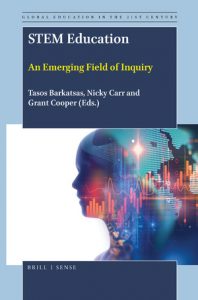 STEM education: an emerging field of inquiry
STEM education: an emerging field of inquiry
by Barkatsas, Tasos; Carr, Nicky; Cooper, Grant
2. Delivering STEM Education through School-Industry Partnerships: A Focus on Research and Design / Marc J. de Vries
3. Reading STEM as Discourse / Kathy Jordan
4. Implementing Virtual Reality in the Classroom: Envisaging Possibilities in STEM Education / Li Ping Thong
5. Multiplicative Thinking: A Necessary STEM Foundation / Shalveena Prasad
6. Possibilities and Potential with Young Learners: Making a Case for steam Education / Lisa Borgerding
7. Inquiry-Based Learning in Statistics: When Students Engage with Challenging Problems in STEM Disciplines / Zsolt Lavicza
8. Values in STEM Education: Investigating Macau Secondary Students’ Valuing in Mathematics Learning / Io Keong Cheong
9. Perspectives on STEM Education in Preservice Primary Teacher Education / Tricia Forrester
10. Primary Pre-Service Teachers’ Perceptions of STEM Education: Conceptualisations and Psychosocial Factors / Nicky Carr
11. Building STEM Self-Perception and Capacity in Pre-Service Science Teachers through a School-University Mentor Program / Grant Cooper
12. Building Academic Leadership in STEM Education / Belinda Kennedy.
 STEM in the primary curriculum
STEM in the primary curriculumby Caldwell, Helen (Lecturer in Education); Pope, Sue
LB1585 .S747 2019, EDUCATION LIBRARY stacks
2. STEM in the early years / Eleanor Hoskins
3. Primary science and STEM / Rania Maklad
4. Mathematics in STEM education / Sue Pope
5. Design and technology in STEM / Anne Guilford
6. Foreign languages and STEM / Sarah Lister
7. Drama and STEM / Alison Ramsay
8. Engaging girls in STEM / Neil Smith
9. Computing and STEM / Vasemin Allsop
10. arts in STEM: STEAM / Sway Grantham
11. Preparing for transition to secondary STEM / David Barlex.
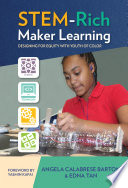 STEM-rich maker learning: designing for equity with youth of color
STEM-rich maker learning: designing for equity with youth of colorby Calabrese Barton, Angela; Tan, Edna
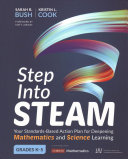 Step into STEAM: your standards-based action plan for deepening mathematics and science learning, grades K-5
Step into STEAM: your standards-based action plan for deepening mathematics and science learning, grades K-5by Bush, Sarah B; Cook, Kristin Leigh
ch. 1 What Is STEAM and Why Does It Matter?
ch. 2 How Do I Prepare for STEAM Teaching?
ch. 3 What Frameworks Can Guide How I Engage Students in STEAM?
pt. 2 STEPPING INTO STEAM
ch. 4 How Do I Design STEAM Inquiries?
ch. 5 How Do I Implement STEAM Inquiries?
ch. 6 How Do I Assess My Students’ Learning in STEAM?
pt. 3 PUTTING IT ALL TOGETHER IN STEAM
ch. 7 What Are Some Examples of Successful STEAM Inquiries?
ch. 8 How Do I Tie It All Together to Create the STEAM Learning Experience?
ch. 9 How Do I Gather Resources for STEAM?
Featured New Children’s and YA books: March 2021
Featured new children’s and young adult books for the month of March. Click on the book cover or title to take you to the UBC Library catalogue record for the item.
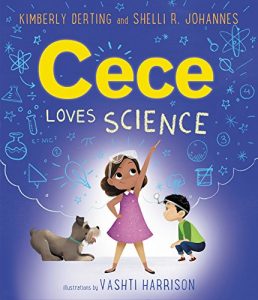 Cece loves science / Kimberly Derting and Shelli R. Johannes; illustrations by Vashti Harrison.
Cece loves science / Kimberly Derting and Shelli R. Johannes; illustrations by Vashti Harrison.
PZ7.D4468 Cc 2018
Cece loves science! In this STEM-themed picture book, Cece asks one of life’s most pressing questions: Do dogs eat vegetables? Cece and her best friend, Isaac, head to the lab to find out.
This picture book is perfect for fans of Ada Twist, Scientist, and anyone who enjoys asking questions.
Cece’s parents say she was born curious. She asks: Why? How? What if? When her teacher, Ms. Curie, assigns a science project, Cece knows just what to ask—do dogs eat vegetables? She teams up with her best friend, Isaac, and her dog, Einstein, to discover the answer. They investigate, research, collect data, and analyze, using Einstein as their case study. Their final conclusion is surprising, and a lot of fun!
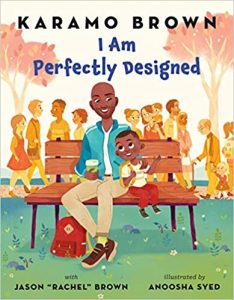 I am perfectly designed / Karamo Brown and Jason “Rachel” Brown; illustrated by Anoosha Syed.
I am perfectly designed / Karamo Brown and Jason “Rachel” Brown; illustrated by Anoosha Syed.
PZ7.1.B79548 Im 2019
In this empowering ode to modern families, a boy and his father take a joyful walk through the city, discovering all the ways in which they are perfectly designed for each other.
“With tenderness and wit, this story captures the magic of building strong childhood memories. The Browns and Syed celebrate the special bond between parent and child with joy and flair…Syed’s bright, cartoon illustrations enrich the tale with a meaningful message of kindness and inclusion.”―Kirkus
.
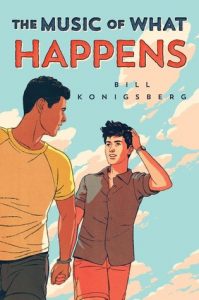 The music of what happens / Bill Konigsberg.
The music of what happens / Bill Konigsberg.
PZ7.K83518 Ms 2019 Great Reads
“It is summer in Phoenix, and seventeen-year-old Maximo offers to help Jordan, a fellow student in high school, with the food truck that belonged to Jordan’s deceased father, and which may be the only thing standing between homelessness for Jordan and his mom; the boys are strongly attracted to each other, but as their romance develops, it is threatened by the secrets they are hiding–and by the racism and homophobia of those around them.”
Collection Spotlight: Get Ready to Garden!
Teacher Resources
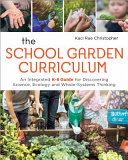 The school garden curriculum: an integrated K-8 guide for discovering science, ecology, and whole-systems thinking
The school garden curriculum: an integrated K-8 guide for discovering science, ecology, and whole-systems thinking
Kaci Rae Christopher.
GE77 .C57 2019
“The School Garden Curriculum provides an integrated K-8 framework and over 200 weekly lessons that weave science, permaculture, and environmental education into place-based, immersive learning.
For teachers aiming to blend science and life skills while inspiring environmental stewardship.”–
Subject(s): Environmental education–Activity programs.
Gardening–Study and teaching (Elementary)
Science–Study and teaching (Elementary)
Ecology–Study and teaching (Elementary)
Place-based education.
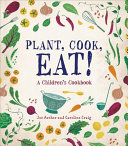 Plant, cook, eat!: a children’s cookbook
Plant, cook, eat!: a children’s cookbook
Joe Archer and Caroline Craig.
TX801 .A73 2018
For beginners and green-thumbed foodies, this unusually all-inclusive garden-to-kitchen cookbook is part lesson in gardening and part collection of healthy, delicious, kid-friendly recipes.
Subject(s): Cooking (Vegetables)–Juvenile literature.
Vegetable gardening–Juvenile literature.
Cookbooks–Juvenile literature.
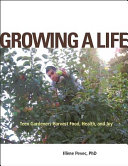 Growing a Life: teen gardeners harvest food, health, and joy
Growing a Life: teen gardeners harvest food, health, and joy
Illène Pevec.
SB457.4.T44 P48 2016
Growing a Life demonstrates just how influential school and community gardening programs can be for adolescents. Readers follow author Illène Pevec as she travels from rural Colorado to inner New York City, and from agrarian New Mexico to urban Oakland, California, to study remarkable youth gardening programs for at-risk teens. Expressive candid interviews with more than eighty students, substantiated by relevant neuroscience research and a framework of positive psychology, explain the life-altering physical and emotional benefits of gardening. As students share their experiences tending the soil and the plants, feeding their families and their communities, and guiding younger children, readers are given the opportunity to examine the largely unexplored topic of mentored urban gardening. Growing a Life will inspire educators, community leaders, and youth to team up and establish community gardens where they do not already exist and to involve youth in existing gardens.–AMAZON.
Subject(s): Gardening for teenagers–United States.
Gardening–Psychological aspects.
Adolescent psychology.
Community gardens–United States.
Gardening.
Adolescent Health.
Urban Health.
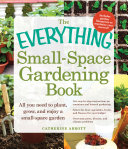 The everything small-space gardening book: all you need to plant, grow, and enjoy a small-space garden
The everything small-space gardening book: all you need to plant, grow, and enjoy a small-space garden
Catherine Abbott.
SB453 .A23 2012
Provides tips and information about creating such small gardens as layered, square-foot, vertical, and container gardens.
Subject(s): Small gardens.
Vegetable gardening.
Container gardening.
Small gardens–Design.
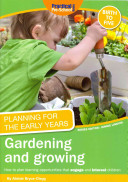 Gardening and growing: how to plan learning opportunities that engage and interest children
Gardening and growing: how to plan learning opportunities that engage and interest children
Alistair Bryce-Clegg.
SB457 .B726 2012
This title will allow you to: plan for children’s individual stages of development through the use of adaptable and inclusive plans, and plans specifically for the 0-3s, engage and motivate children to learn by planning around their interests and include children with English as an Additional Language and Special Educational Needs through plans that take into consideration a variety of abilities.
Subject(s): Children’s gardens–Great Britain.
Gardening–Study and teaching (Early childhood)–Activity programs–Great Britain.
Early childhood education–Activity programs–Great Britain.
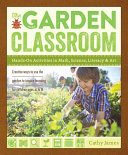 The Garden Classroom: hands-on activities in math, science, literacy, and art
The Garden Classroom: hands-on activities in math, science, literacy, and art
Cathy James.
SB457 .J36 2015
James offers a whole year of outdoor play and learning ideas, using garden-based activities to promote science and math, reading and writing, and arts and crafts.
Subject(s): Gardening for children.
Gardening–Study and teaching (Early childhood)–Activity programs.
Outdoor education.
.
.
Juvenile Literature
Fiction
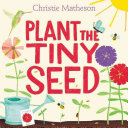 Plant the tiny seed
Plant the tiny seed
Christie Matheson.
PZ8.3.M4227 Pl 2017
Plant a seed to watch it grow. Press on the cloud to make it rain. Jiggle the book to scatter the seeds. The interactive text teaches very young children how flowers sprout and mature. Contains watercolour depictions of a flower in various stages of growth.
Subject(s): Seeds–Juvenile fiction.
Gardening–Juvenile fiction.
Stories in rhyme.
Seeds–Fiction.
Gardening–Fiction.
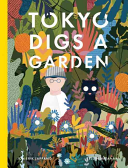 Tokyo digs a garden
Tokyo digs a garden
Jon-Erik Lappano; pictures by Kellen Hatanaka.
PZ4.9 .L36526 Tk 2016
Tokyo lives in a small house between giant buildings with his family and his cat, Kevin. For years, highways and skyscrapers have been built up around the family’s house where once there were hills and trees. Will they ever experience the natural world again? One day, an old woman offers Tokyo seeds, telling him they will grow into whatever he wishes. Tokyo and his grandfather are astonished when the seeds grow into a forest so lush that it takes over the entire city overnight. Soon the whole city has gone wild, with animals roaming where cars once drove. But is this a problem to be surmounted, or a new way of living to be embraced? —
Subject(s): Environmentalism–Juvenile fiction.
City and town life–Juvenile fiction.
Imagination–Juvenile fiction.
Magic–Juvenile fiction.
Animals–Juvenile fiction.
Gardening–Fiction.
City and town life–Fiction.
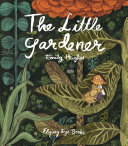 The little gardener
The little gardener
Emily Hughes
PZ4.9.H835144 Lt 2015
A little gardener who is not very good at gardening makes a wish for a little help.
Subject(s): Gardening–Fiction.
Wishes–Fiction.
Gardeners–Juvenile fiction.
Gardening–Juvenile fiction.
Body size–Juvenile fiction.
Persistence–Juvenile fiction.
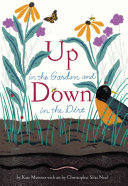 Up in the garden and down in the dirt
Up in the garden and down in the dirt
Kate Messner; with art by Christopher Silas Neal.
SB457 .M47 2015
“Up in the garden, the world is full of green–leaves and sprouts, growing vegetables, ripening fruit. But down in the dirt there is a busy world of earthworms digging, snakes hunting, skunks burrowing, and all the other animals that make a garden their home. In this exuberant book, discover the wonder and activity that lie hidden between the stalks, under the shade of leaves … and down in the dirt.”–
Subject(s): Gardening–Juvenile literature.
Gardens–Juvenile literature.
Soils–Composition–Juvenile literature.
Gardening.
Soils–Composition.
 Charlie’s dirt day
Charlie’s dirt day
Andrew Larsen; illustrated by Jacqueline Hudon-Verrelli.
PZ4.9.L377127 Ch 2015
“Join Charlie as he learns about composting, gardening, and making the best spaghetti sauce ever.” — P.4 of cover.
Subject(s): Compost–Juvenile fiction.
Gardening–Juvenile fiction.
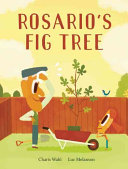 Rosario’s fig tree
Rosario’s fig tree
Charis Wahl; pictures by Luc Melanson.
PZ4.9.W1885 Rs 2015
“Every spring the little girl who lives next door to Rosario helps him plant vegetables. One spring, Rosario plants a fig tree, which soon bears sweet purple fruit. But when fall comes, he bends it over and buries it in the ground.”–Publisher.
Subject(s):Fig–Fiction.
Tree planting–Fiction.
Gardening–Juvenile fiction.
Fig–Juvenile fiction.
Tree planting–Juvenile fiction.
Picture books for children.
Non-Fiction
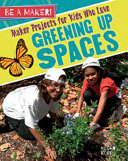 Maker projects for kids who love greening up spaces
Maker projects for kids who love greening up spaces
Megan Kopp.
SB457 .K67 2017
“Creative readers with a green thumb and an eye for design will be inspired to create their own gardening and landscaping projects in unique spaces. From vertical gardens to urban parklets, this title will motivate readers to “green up” spaces in their communities in a way that promotes environmental awareness, collaboration, and group planning. Profiles of innovators and their green creations encourage readers to embrace their own ideas and create their Maker visions.”–
Subject(s): Gardening–Juvenile literature.
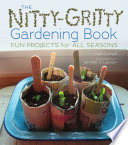 The nitty-gritty gardening book: fun projects for all seasons
The nitty-gritty gardening book: fun projects for all seasons
Kari Cornell; photographs by Jennifer S. Larson.
SB457 .C66 2015
Grow your own fruits, vegetables, and flowers! Become a gardener in any season with these fun and easy projects. You don’t even need a garden space–many of these activities can be done by planting in containers to set on a porch or a patio or even in a window.
Subject(s): Gardening–Juvenile literature.
Gardening for children.
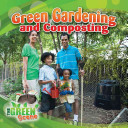 Green gardening and composting
Green gardening and composting
Molly Aloian.
S494.5 .S86 A46 2014
Aloian defines “green gardening” as “planting and growing a healthy garden that is good for the environment.” In 11 quick chapters, readers will learn such tips as how to remove pests with natural repellents like garlic and cayenne pepper and “how to get help from birds and insects.” Suggestions are punctuated by “Take Action!” boxes, where readers are encouraged to keep a green diary or look for unusual planters, such as old boots or cookie tins. Aloian quickly moves into composting, explaining the process and making the case for its ease of use at home. The transition from dinner table to compost heap is illustrated with full-color photographs, which also display the natural beauty of rooftop and community gardens.
Subject(s): Sustainable agriculture–Juvenile literature.
Composting–Juvenile literature.
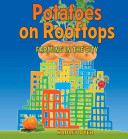 Potatoes on rooftops: farming in the city
Potatoes on rooftops: farming in the city
Hadley Dyer.
SB453 .D94 2012
Offers practical tips and techniques for urban gardening and includes an overview of the how and why of the movement.
Subject(s): Urban gardening–Juvenile literature.
Urban gardening.
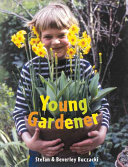 Young gardener
Young gardener
Stefan & Beverly Buczacki; special photography by Anthea Sieveking.
SB457 .B83 2010
Introduces young readers to gardening, describing how the garden is changing throughout the seasons and providing instructions on different tasks that can be done to grow and maintain healthy plants and flowers.
Subject(s):Gardening.
Gardening–Juvenile literature.
Collection Spotlight: Freedom of Expression, Freedom to Read & Challenged Books
Freedom to Read Week 2021 will take place from February 21 to 27, 2021. We have selected some of the challenged books from the challenged book list on the Freedom to Read website which are available at UBC Education library.
French Books
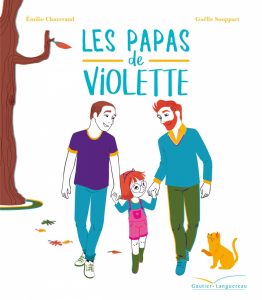
Les papas de Violette
Émilie Chazerand; Gaëlle Souppart.
PZ23.C467 Pp 2017 French Collection
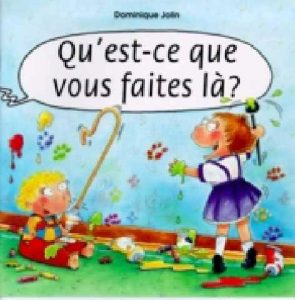
Qu’est-ce queue vous faites là?
Dominique Jolin.
PZ20.9.J554 QS 1993 French Collection
Juvenile Literature

Dumplin‘
Julie Murphy.
PZ7.M95352 Dm 2017
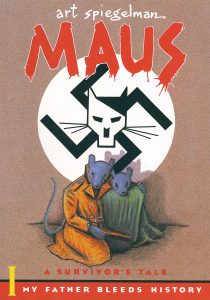
Maus: a survivor’s tale
Art Spiegelman.
D804.3 .S66
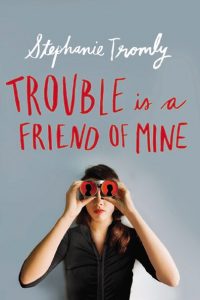
Trouble Is a Friend of Mine
Stephanie Tromly.
PZ7.1.T76 Tr 2015
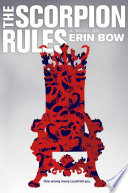
The Scorpion Rules
Erin Bow
PZ7.B67167 Sc 2015

The graveyard book
Neil Gaiman; with illustrations by Dave McKean.
PZ7.G1273 Gr 2008

Rabbit ears
Maggie de Vries.
PZ7.D497 Rb 2014

Power Play
Eric Walters
PZ7 .W168 Pw 2013
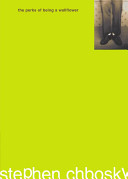
The Perks of Being a Wallflower
Stephen Chbosky.
PZ7 .C3978 Pr 1999
Children’s Books
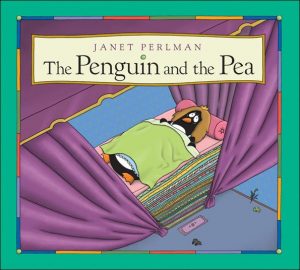
The penguin and the pea
retold and illustrated by Janet Perlman.
PZ4.9.P315 Pn 2004
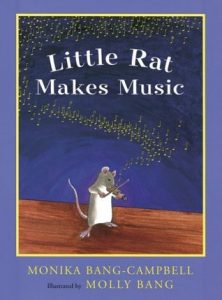
Little Rat Makes Music
Monika Bang-Campbell; illustrated by Molly Bang.
PZ7.B2218 Lr 2007
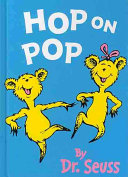
Hop on Pop
Dr. Seuss
PZ8.3 .G276 Hp 2006
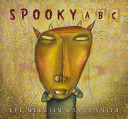
Spooky A B C
Eve Merriam; illustrated by Lane Smith.
PZ8.3 .M25 Sp 2002

And Tango makes three
Justin Richardson and Peter Parnell; illustrated by Henry Cole.
PZ10.3.R414 An 2005
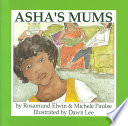
Asha’s mums
by Rosamund Elwin & Michele Paulse; illustrated by Dawn Lee.
PZ4.9.E468 AS 1990
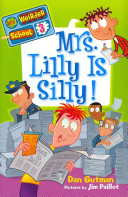
Mrs. Lilly is Silly!
Dan Gutman; pictures by Jim Paillot.
PZ7.G9846 Mr 2011

Bedtime for Frances
Russell Hoban; pictures by Garth Williams.
PZ10.3 .H646 Be
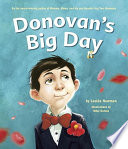
Donovan’s big day
Lesléa Newman; illustrations by Mike Dutton.
PZ8.3.N4655 Dn 2011
Want to learn more about banned books? Check this out:
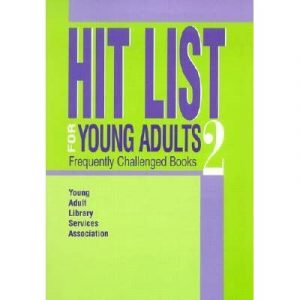
Hit list for young adults 2: frequently challenged books
Teri S. Lesesne and Rosemary Chance for the Young Adult Library Services Association of the American Library Association; with a foreword by Chris Crutcher. Online
A guide for librarians containing profiles of twenty young adult books that are often challenged by parents, presenting plot summaries, lists of reviews, and discussions of each book’s controversial issues. Also provides the ALA Library Bill of Rights and explains how to write a book rationale.
Z1019 .L48 2002
Featured New Resources: February 2021
Featured new resources for the month of February. Click on the book cover or title to take you to the UBC Library catalogue record for the item.
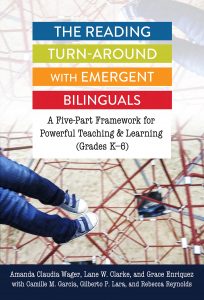 The reading turn-around with emergent bilinguals: a five-part framework for powerful teaching & learning (grades K-6) / Amanda Claudia Wager, Lane W. Clarke, and Grace Enriquez; with Camille M. Garcia, Gilberto P. Lara, and Rebecca Reynolds.
The reading turn-around with emergent bilinguals: a five-part framework for powerful teaching & learning (grades K-6) / Amanda Claudia Wager, Lane W. Clarke, and Grace Enriquez; with Camille M. Garcia, Gilberto P. Lara, and Rebecca Reynolds.
LC3725 .W34 2019
“This practical resource will help K-6 practitioners grow their literacy practices while also meeting the needs of emergent bilingual learners.
Building on the success of The Reading Turn-Around, this book adapts the five-part framework for reading instruction to the specific needs of emergent bilinguals.
Designed for teachers who have not specialized in bilingual instruction, the authors provide an accessible introduction to differentiating instruction that focuses on utilizing students’ strengths, identities, and cultural backgrounds to foster effective literacy instruction.
Chapters include classroom vignettes, teacher exercises, illustrations of powerful reading plans for the student and teacher, resources for culturally and linguistically diverse children’s literature, and tools to engage with students’ families and communities”
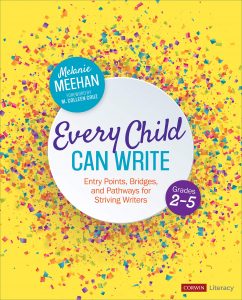 Every child can write, grades 2-5: entry points, bridges, and pathways for striving writers
Every child can write, grades 2-5: entry points, bridges, and pathways for striving writers
Melanie Meehan; foreword by M. Colleen Cruz.
LB1576 .M434 2020
“In all classrooms, there are students who have difficulty with writing, either because of developmental challenges or previous experiences with limited instruction.
These are kids who can’t think of ideas or organize thoughts or integrate the many components of written language; and these are the students who keep teachers up at night.
This book focuses on specific approaches to take when working with striving writers. This is not a book about how to teach writing – but a book about how to teach students.
And the ideas here are based firmly in the belief that every child can write when given adequate entry points, bridges, and pathways to success by a knowledgeable, intentional teacher”
.
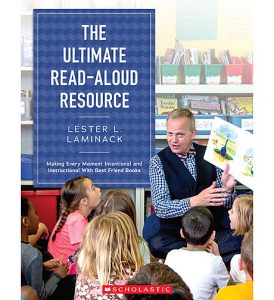 The ultimate read-aloud resource: making every moment intentional and instructional with best friend books
The ultimate read-aloud resource: making every moment intentional and instructional with best friend books
Lester L. Laminack.
LB1573.5 .L36 2019
Award-winning children”s author and acclaimed educator Lester L. Laminack provides guidelines, lessons, and resources for making every read-aloud experience intentional and instructional to engage students in deep thinking about fiction and nonfiction books.
Central to Laminack”s message is his breakthrough thinking about the value and importance of “Best Friend Books”- a small, carefully curated collection that you turn to repeatedly for specific teaching purposes.


